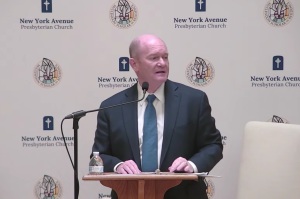Homeschooling remains fastest-growing form of education, especially after COVID lockdowns

A new report reveals that homeschooling continues to be the fastest-growing form of education in the United States even after the COVID-19 lockdowns that sparked the increased embrace of homeschooling has receded.
The Washington Post released data last week finding that homeschooling in the U.S. has increased 51% since the 2017-18 school year. While the rate of homeschooling has declined after reaching a high of 63% in the 2020-21 school year, at the height of the COVID-19 pandemic, the popularity of homeschooling continues to grow at a faster rate than other forms of schooling.
The statistics included in the report, authored by Peter Jamison, Laura Meckler, Prayag Gordy, Clara Ence Morse and Chris Alcantara, cover the six school years beginning with the 2017-18 school year and ending with the 2022-23 school year. In the same period, private schooling has seen a 7% increase, while public school enrollment has decreased by 4%.
Noting that the National Center for Education Statistics estimated the number of homeschooled students at 1.5 million in 2019, the year before the COVID-19 pandemic and subsequent lockdowns, the report synthesized that the number of homeschooled children in the U.S. ranges from 1.9 million to 2.7 million. The uncertainty about the total number of homeschooled students stems from the fact that several states don't collect such statistics.
Breaking down data by state level where available, the report identified Washington, D.C., New York, South Dakota and California as the states with the highest increase in homeschooling. Homeschooling in those states skyrocketed by 108%, 103%, 94% and 78%, respectively. Rhode Island (91%) and Tennessee (77%) also saw noticeable rises in homeschooling, although the increases in those states only take into account statistics through the 2021-22 school year, the most recent one where data is available.
Other notable increases in homeschooling were recorded in Florida (72%), Hawaii (63%), Kansas (57%), Kentucky (56%), Massachusetts (55%), Ohio (54%) and Louisiana (51%). Pennsylvania saw a 61% rise in homeschooling through the 2021-22 school year, the most recent year in which data was available.
States with smaller increases in homeschooling included South Carolina (49%), Vermont (47%), Wyoming (47%), Arkansas (46%), Montana (45%), North Dakota (38%), Washington (33%), Wisconsin (33%), Virginia (31%) and Nebraska (31%). The states with the smallest rises in homeschooling were New Hampshire (29%), Delaware (20%), Mississippi (20%), Colorado (17%), Georgia (10%), Maryland (6%) and New Mexico (1%). Data was not available for the remaining states.
An interactive database included within the article enables those curious about homeschooling statistics within their individual school district to type in the name of their district and review data from the past six years. The database does not have information from school districts in Alabama, Alaska, Arizona, Arkansas, California, Colorado, Connecticut, Idaho, Illinois, Indiana, Iowa, Michigan, Missouri, Montana, Nebraska, Nevada, New Jersey, North Carolina, Oklahoma, Oregon, Texas, Utah and West Virginia.
“In 390 districts included in The Post’s analysis, there was at least one home-schooled child for every 10 in public schools during the 2021-22 academic year, the most recent for which district-level federal enrollment data are available,” the report stated. “That’s roughly quadruple the number of districts that had rates that high in 2017-2018, signifying a sea change in how many communities educate their children and an urgent challenge for a public education system that faced dwindling enrollment even before the pandemic.”
As the report repeatedly suggested, the COVID-19 pandemic that led to the suspension of in-person learning throughout much of 2020 and the imposition of mask mandates in addition to other controversial mitigation efforts were seen as major factors in the rise in homeschooling. The increased popularity of homeschooling comes as concerns about the presence of sexually explicit material in school libraries as well as the curriculum itself, have led to tense exchanges at school board meetings across the U.S.
Amid the nationwide surge in homeschooling, some states have taken action to provide financial support for parents seeking to provide their children with an alternative to public schools. Last year, Arizona enacted a school choice program that enabled all families participating in a scholarship program open to all K-12 students to receive $6,500 a year that can be directed toward homeschooling their children.
West Virginia implemented a similar law in 2021 that will enable families who withdraw their children from public schools to receive a $4,600 per year scholarship for each of their children to help cover homeschooling expenses. The school choice programs in both Arizona and West Virginia also allow parents to use state funding to send their children to private schools.
Ryan Foley is a reporter for The Christian Post. He can be reached at: ryan.foley@christianpost.com



























